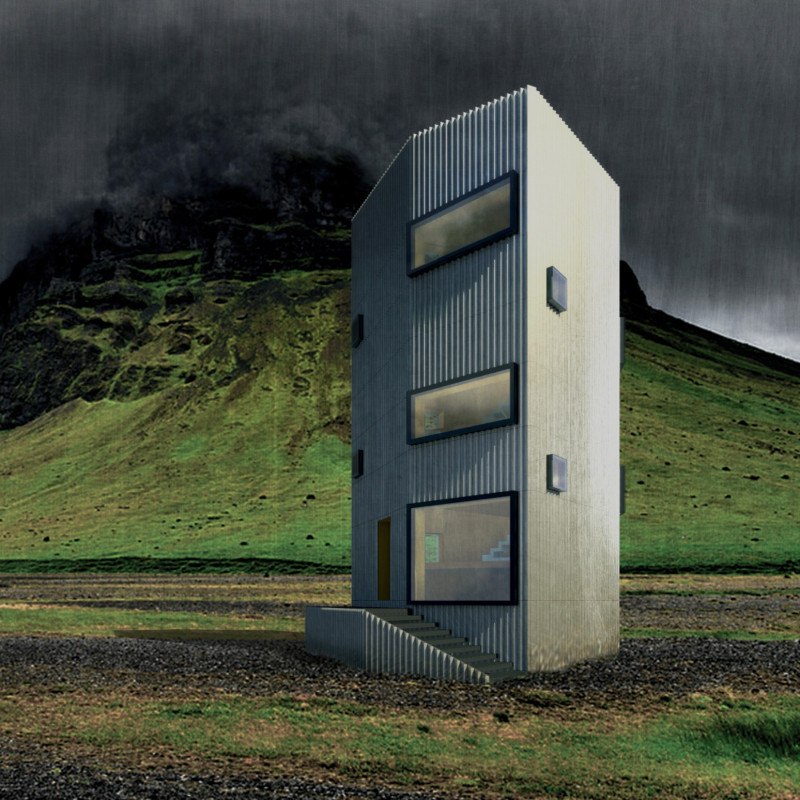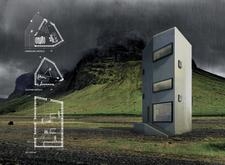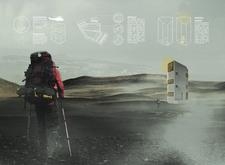5 key facts about this project
### Project Overview
"The Beacon" is situated in Iceland, responding to the specific geographical and climatic challenges of the region. Drawing inspiration from the volcanic and glacial landscapes, the design reflects the area's dramatic contrasts and natural beauty. The project aims to foster a connection between visitors and the surrounding wilderness, serving as a refuge that embodies Icelandic culture through its communal and comforting design.
### Spatial Configuration and Structural Design
The architectural arrangement is modular, providing flexibility and cultural relevance across diverse terrains. A notable feature is the building's 120-degree angular shift, which not only facilitates panoramic views but also delineates private and communal areas. This design choice engages with the dramatic Icelandic landscape while ensuring user privacy. The structure is elevated, symbolizing a lookout over the environment, establishing a dialogue between inhabitants and their surroundings.
#### Material Choices
The exterior is clad in weathered steel, enhancing durability against the region's harsh weather. Concrete serves as the foundational and structural material, offering stability and thermal mass for energy efficiency. Interior spaces utilize high-quality plywood for warmth, creating a contrast with the steel façade. Advanced insulating materials maintain internal temperatures, promoting sustainability in the face of fluctuating external conditions.
### Internal Organization and User Interaction
The design of "The Beacon" emphasizes human interaction and connection to nature. A communal module features an open layout with large windows that provide extensive views of the landscape, encouraging social engagement. The sleeping module is thoughtfully designed for privacy, with natural light optimally utilized to create a relaxing atmosphere. Other functional modules, such as kitchens and baths, are strategically positioned to enhance usability while allowing for flexible internal arrangements.
### Technological Integration and Resource Efficiency
Innovative energy and water systems are integral to the project's design, addressing the challenges posed by its remote location. Renewable energy solutions, including solar panels and wind turbines, are incorporated to power the facilities. Advanced water recycling systems promote resource efficiency, minimizing reliance on external water sources and highlighting the project's commitment to sustainability in an often inhospitable environment.






















































